Level switches are tools used to measure and report the levels of liquids, fluids, and fluidized solids in transmission equipment or storage enclosures. Sometimes, they are also used to control these levels as well. If and when that is the case, we may call them level control switches, level controllers, or level transmitters. In systems that measure but do not control levels, we may also call them level indicators or level sensors. Read More…
Sierra`s Innova-Switch™ electronic instruments and devices represent the state-of-the-art in gaseous and liquid flow switching or liquid level control.

At Ryan Herco Flow Solutions, we dedicate ourselves to providing advanced fluid handling products and engineered solutions that meet the demands of a wide range of industries. Our focus is on delivering dependable components and systems that support process efficiency, safety, and reliability.
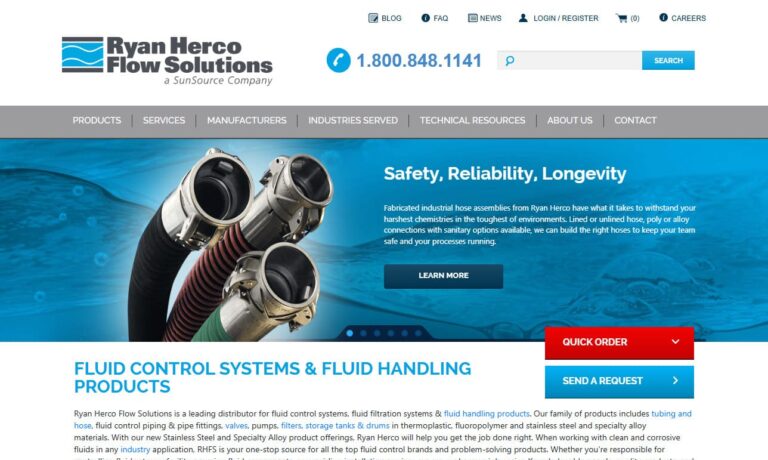
SOR® level switches have earned a long-time reputation for their high quality, rugged construction and reliable performance under the most demanding applications. All float level switches are individually built with strict attention to detail to meet the exact specifications of your process. Available as float level switches and displacer level switches, our product offering provides superior...
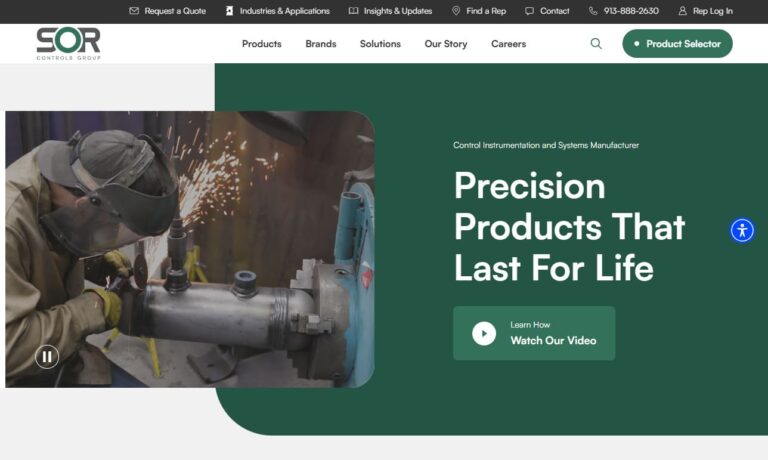
More Level Switch Manufacturers
Applications
Level switches are essential industrial control devices used for a broad range of level detection, monitoring, and automation applications. Their primary function is to detect the presence, absence, or interface level of solids, liquids, or slurries within a container, tank, or process vessel. This real-time level sensing capability is crucial for operational efficiency, safety, and regulatory compliance in numerous industries. Common uses for level switches include:
- • Monitoring and controlling refrigerant or oil levels in HVAC and refrigeration systems for optimal performance and equipment protection
- • Managing potentially hazardous chemicals in industrial processing environments, ensuring safe storage and precise dosing of corrosive or volatile substances
- • Tracking wastewater levels in municipal water treatment facilities, sewage plants, and stormwater management systems to prevent overflows and maintain compliance with environmental regulations
- • Overseeing powder and liquid food ingredient levels during food and beverage production, packaging, and quality assurance processes
- • Measuring bulk quantities of drug ingredients and solvents in pharmaceutical manufacturing, aiding in batch consistency and contamination prevention
- • Regulating fuel and lubricant levels in oil and gas operations, including upstream drilling, downstream refining, and pipeline management
- • Maintaining hydraulic fluid levels in heavy equipment, industrial machinery, and automotive applications, preventing mechanical failure and prolonging equipment lifespan
- • Monitoring chemical feed in water and wastewater treatment plants, ensuring precise chemical dosing and process control
- • Managing inventory in grain silos, cement storage, and mining operations, where solid level detection ensures continuous production and prevents overflow
These devices are widely utilized across various industries such as HVAC, food and beverage, pharmaceuticals, water and wastewater treatment, chemical processing, oil and gas, manufacturing, power generation, agriculture, mining, marine, and hydraulics. Whether you’re seeking a reliable solution for liquid level measurement, solid level control, or interface level detection between immiscible fluids, level switches provide accurate, repeatable, and cost-effective automation for your process needs.
Searching for level switch solutions tailored to your industry? Explore how leading level switch manufacturers can help you address specific challenges in your application.
History
Discussing the history of level switches inevitably leads us to explore the evolution of fluid dynamics and process instrumentation. This scientific field, dedicated to understanding fluid movement and static behavior, has been studied for thousands of years. One of its earliest and most renowned scholars was Archimedes, the Greek polymath. Around 250 BC, Archimedes wrote On Floating Bodies, a seminal work in which he articulated what is now known as Archimedes’ Principle. This principle states that an object immersed in a fluid experiences buoyant forces equal to the weight of the displaced fluid and that every fluid particle in equilibrium experiences equal pressure from all directions.
The first significant advances in controlling fluid levels came from the Middle East. In the 9th century, the Banu Musa brothers, residing in what is now Baghdad, invented a level control device using a float valve and chamber. During the Middle Ages, scholars in this region furthered the study of fluid mechanics. Notable figures such as Abu Rayhan Biruni and Al-Khazini made substantial contributions. Biruni explored the relationships between gravity, displaced water volume, and the weight of various liquids, while Al-Khazini developed the hydrostatic balance and detailed his work in The Book of the Balance of Wisdom (1121 AD).
The Industrial Revolution, about 700 years later, marked a significant leap in level switch technology. In the 1800s, engineers began patenting various level switches to automate fluid control in steam engines and manufacturing plants. Among these, a notable innovation was the magnetic float level switch, which used a magnetic float to operate indicating needles in response to liquid level changes. This advance allowed for safer and more consistent operation of boilers and storage tanks.
In 1936, W.B. Ellwood of Bell Telephone Laboratories invented the reed switch, which remains in use today and operates with an applied magnetic field, paving the way for more compact and reliable electrical level sensing devices. The integration of electrical and magnetic level switches improved reliability and enabled remote monitoring of process tanks.
Today’s level switches are both sophisticated and reliable, incorporating advancements such as laser, LED, and ultrasonic technologies. The evolution toward smart level sensors and digital output has enabled seamless integration with industrial control systems (ICS), SCADA, PLCs, and IIoT (Industrial Internet of Things) networks. As research and development continue, we can expect even more innovation in this field, including wireless level sensors, self-diagnostic devices, and AI-driven predictive maintenance.
Curious about the history and future of level switch technology? Learn more about how leading manufacturers are shaping the next generation of industrial level sensing solutions.
Design
Materials
Level switch manufacturers have a range of materials to choose from, including brass, stainless steel, and various plastics like polypropylene and polysulfone. Material selection is a critical decision, as it impacts the device’s compatibility, longevity, and performance in specific applications.
- Brass: Brass level switches are ideal for applications involving petroleum-based liquids, such as in vehicle storage tanks, hydraulic systems, transmission systems, backup generators, and industrial lubrication systems. Brass provides excellent durability and corrosion resistance in fuels, oils, and non-corrosive chemicals, making it a popular choice in the automotive and heavy machinery sectors.
- Stainless Steel: Stainless steel level switches are widely used in harsh environments requiring superior corrosion resistance, such as chemical processing, food and beverage, pharmaceutical manufacturing, and marine applications. Stainless steel construction ensures compliance with sanitary standards and enables use with aggressive acids, alkalis, and solvents.
- Plastics (Polypropylene & Polysulfone): Polypropylene and polysulfone are favored for their versatility, availability in multiple colors, chemical resistance, and durability in acidic or alkaline environments. These materials are well-suited for lower-temperature food processing, water treatment, electroplating, and metal cleaning systems. Plastics are often chosen for general-purpose applications where cost-effectiveness and chemical inertness are priorities.
- Specialty Materials: For highly specialized applications, such as semiconductor manufacturing, aerospace, or cryogenic storage, level switches may be constructed from exotic alloys, PTFE (Teflon), or glass to withstand extreme temperatures, pressures, or aggressive chemicals.
Considerations and Customization
Designing a level switch involves careful consideration of application requirements, including the properties of the materials being monitored and the operational environment. Key factors include:
- Corrosiveness: Select switch materials and coatings compatible with corrosive liquids or gases, such as acids, caustics, and solvents.
- Viscosity: High-viscosity fluids (e.g., oils, slurries) may require specialized float or vibrating fork designs to avoid sticking or false readings.
- Opacity and Density: Optical and ultrasonic switches may be affected by opaque or dense substances, requiring alternative sensor types.
- Operating Temperature: Extreme cold or heat can affect switch performance; select materials and electronics rated for the intended temperature range.
- Pressure: High-pressure tanks or pipelines call for robust, pressure-rated switch housings and seals.
- Explosion Risk (ATEX, IECEx): For hazardous areas (e.g., oil refineries, chemical plants), choose explosion-proof or intrinsically safe level switches with appropriate certifications.
Based on these factors, manufacturers can create customized level switches with specific features like modified sensors (optical, vibrating, heat, capacitance, etc.) and triggers (buoyancy, pressure, temperature, conductivity, etc.). They can also produce switches in various shapes, mounting styles (top, side, bottom, inline), and sizes. For more details on level switch design, consult with your potential suppliers or use our manufacturer directory to compare custom options.
Features
All level switches have a basic construction comprising a sensing element (such as a float, probe, diaphragm, or paddle), a switching mechanism (mechanical or electronic), a protective tube or enclosure, and various electrical and mechanical connection points. However, beyond this fundamental design, level switches can differ significantly based on application requirements.
Key operational features include:
- Trigger Mechanism: Level switches can be activated by different triggers, such as changes in temperature, buoyancy, pressure, capacitance, or conductivity. Among these, buoyancy is the simplest and most straightforward method for liquid level detection.
- Measurement Medium: Level switches can be engineered to detect solids, liquids, slurries, or interfaces between immiscible fluids (e.g., oil-water interface).
- Contact Type: There are mechanical switches (directly interacting with the process material) and non-mechanical or non-contact switches (using electromagnetic, optical, or ultrasonic methods).
- Output Signal: Options include simple on/off (discrete) switching, analog outputs (for proportional level measurement), or digital communications (e.g., Modbus, HART, Profibus) for integration with process control systems.
- Fail-Safe Design: Many industrial switches include alarms, redundancy, or fail-safe mechanisms to alert operators to abnormal conditions or device malfunctions.
Looking for a specific feature in your next level switch? Search by feature or application to find the right solution for your process.
Types
Level switch manufacturers produce a wide range of switches to meet the diverse needs of industrial and commercial applications. Understanding the major types can help you choose the ideal solution for your project:
- Liquid Level Switches: Specifically designed to measure and control the presence, absence, or height of liquids. These switches provide information on attributes such as flow, volume, and pressure. They are typically used in transmission and storage systems, sumps, reservoirs, and process tanks.
- Solid Level Switches: Used to measure and control the level of solid materials such as powders, grains, pellets, and bulk solids in hoppers, silos, and conveyors.
- Float Level Switches: Operate on the principle of buoyancy. A float rides on the liquid surface and activates a magnetic or mechanical switch when the level reaches a predetermined point. These are widely used for pump control, tank filling, and leak detection in industrial, commercial, and residential systems. For more on this type, see our dedicated page on float level switches.
- Spinning Rotary Level Switches: A type of solid level switch, these employ rotating paddles or blades inside a bin or hopper. When the solid material rises and impedes the rotating element, the switch is triggered, signaling a full or high-level condition.
- Mechanical Level Switches: Utilize direct physical contact, such as floats, displacers, or levers, to actuate the switch. Common in tanks, process vessels, and open bodies of liquid. Explore more at mechanical level switches.
- Nonmechanical Level Switches: Non-contact switches using optical, ultrasonic, capacitance, or laser sensors to detect level changes. These are ideal for applications where the media is corrosive, sticky, or otherwise unsuitable for mechanical components.
- Displacer Level Switches: Similar to float switches, these use a cylindrical or spherical displacer suspended in the liquid. Changes in buoyancy actuate the switch, enabling precise detection of liquid levels in challenging environments such as high pressure or temperature.
- Chambered Level Switches: Feature a sealed chamber that houses the switching mechanism, isolating it from direct process contact. Used for both solid and liquid control, especially in high-purity or hazardous applications.
- Capacitance Level Sensors: Measure level changes by detecting variations in capacitance as the process material covers the probe. Suitable for detecting organic and aqueous liquids, slurries, and some solids, even those with low dielectric constants.
- Ultrasonic Level Switches: Utilize pulses of ultrasonic energy to detect the presence or absence of material. These switches are non-contact and ideal for sticky, viscous, or hazardous substances.
- Optical Level Switches: Use infrared LED diodes to detect sediment, suspended solids, or liquid interfaces. They are highly responsive and unaffected by changes in pressure or temperature.
- Laser Level Switches: Employ precise laser diode technology to measure and control the level of solid materials like pellets, granules, and bulk goods. Their high accuracy and rapid response make them suitable for automated storage and high-speed production lines. To ensure safety, always follow manufacturer guidelines when using laser level switches.
Not sure which type fits your needs? Ask yourself: Does your application require contact or non-contact measurement? Are you dealing with aggressive chemicals or sanitary environments? Compare manufacturers by type, technology, and application area.
Advantages
Level switches provide several compelling benefits for process automation, safety, and cost management:
- High Reliability: Designed for long-term operation with minimal maintenance, level switches offer dependable performance in continuous or batch processes.
- Safety: By automatically controlling pumps, valves, and alarms, level switches prevent tank overflows, dry running, spillage, and hazardous incidents.
- Ease of Use: Their straightforward operation and simple installation mean that even non-specialists can deploy and maintain these devices.
- Customizability: With a wide range of materials, sensor types, and mounting options, level switches can be tailored to meet nearly any requirement, from food-grade to explosion-proof designs.
- Low Cost of Ownership: Fewer moving parts and robust construction result in low failure rates and minimal downtime, making them a cost-effective investment.
- Integration: Modern switches support digital communication protocols, enabling seamless integration into industrial control systems, SCADA platforms, and IoT-enabled smart factories.
Interested in boosting process reliability or plant safety? Find out how the right level switch can enhance your operations.
Accessories
To enhance your measurement processes and extend the functionality of your level switch installation, you can choose from a variety of accessories. Popular options include:
- Pressure Switch Mounting Brackets: Ensure secure and stable installation of level switches on tanks, pipes, or vessels.
- Alarms: Audible or visual alarms to alert operators of high, low, or abnormal level conditions.
- Float Rods and Balls: Replacement components or custom assemblies for float switch systems.
- Counter Flanges: Used for mounting and sealing level switches in pressurized or sanitary environments.
- Remote Gauges: Allow remote or digital display of tank or vessel level for enhanced monitoring.
- Shut-Off Valves: Automate flow control in response to level switch signals, preventing overfill or dry run conditions.
- Protective Enclosures: Weatherproof or explosion-proof housings for harsh or hazardous locations.
- Signal Isolators & Relays: Interface devices that transmit the level switch signal to control systems or actuators.
Looking for accessories to improve your system? Browse supplier solutions or request custom accessories to match your requirements.
Standards
The certifications and requirements for your level switches vary based on your industry, application, and location. For instance, if you’re using switches in the medical or food sector, they must be FDA approved and often meet NSF (National Sanitation Foundation) standards. If your application involves hazardous locations, look for ATEX or IECEx certifications. Major standards organizations and their relevance include:
- ASTM International: Sets material and performance standards for mechanical and electronic devices.
- ANSI (American National Standards Institute): Defines safety, interoperability, and quality requirements for industrial equipment.
- ASME (American Society of Mechanical Engineers): Regulates pressure vessel and piping applications, including instrumentation mounting.
- ISO (International Organization for Standardization): Provides global standards for quality management, environmental compliance, and process safety.
- UL/CSA: For electrical safety and certification in North America.
- CE Marking: For compliance with European Union health, safety, and environmental regulations.
- FM/ATEX/IECEx: For use in explosive or hazardous environments.
To determine the standards your level switches should meet, consult with industry experts and your supplier’s technical team. Search for certified manufacturers by industry or compliance requirement.
Things to Consider
If you’re looking to purchase one or more level switches, it’s crucial to partner with an experienced professional who can provide the ideal solution for your needs. To assist you in finding the right supplier, we’ve compiled a list of some of the most reliable and highly-rated level switch manufacturers in the industry. You can browse their profiles by scrolling up and down to find their information nestled between these paragraphs.
Before you begin browsing, we recommend taking the time to prepare a list of your specifications, including any questions or concerns you may have. Important decision factors include:
- Process Requirements: What type of material (liquid, solid, slurry) do you need to measure? What is the temperature, pressure, and chemical composition of the process?
- Accuracy and Response Time: How precise does the measurement need to be, and how quickly should the switch react?
- Mounting Constraints: Do you require side, top, or inline installation? Is there limited space or accessibility?
- Environmental Conditions: Will the device be exposed to vibration, dust, moisture, or corrosive atmospheres?
- Compliance and Certification: Are there industry-specific standards, such as FDA, ATEX, or ISO, that your application must meet?
- Electrical Output and Integration: Does the switch need to interface with a PLC, SCADA, or building automation system?
- Maintenance and Support: What are your expectations for post-delivery support, installation assistance, and parts replacement?
- Budget and Delivery Timeline: What are your project’s financial and scheduling constraints?
With your list in hand, you’ll be able to browse with confidence. This will help you quickly determine whether a supplier offers the products and services you need. Choose three or four suppliers that interest you the most, then reach out to each of them. Discuss your application in detail, using your specifications list as a guide. After speaking with representatives from each company, compare their offerings. Choose the one that not only provides the right price but also the best services, and start your project with confidence.
Ready to get started? Contact level switch suppliers for quotes, technical support, or custom solutions tailored to your process control needs.
Frequently Asked Questions (FAQs)
- What is the difference between a level switch and a level sensor?
While both devices are used for level measurement, a level switch typically provides a discrete on/off signal for level control (e.g., pump start/stop), whereas a level sensor provides continuous or analog level measurement data for monitoring. - How do I choose the right level switch for my application?
Consider the properties of the material to be measured, environmental conditions, required accuracy, output signal type, and any industry-specific compliance requirements. Consult application engineers or use online product selectors for guidance. - Can level switches be used for high-temperature or high-pressure applications?
Yes, specialized level switches are available with materials and designs rated for extreme temperatures and pressures. Always verify ratings with the manufacturer. - Are there maintenance requirements for level switches?
Most level switches are low-maintenance, but regular inspection and cleaning are recommended for optimal performance, especially in applications prone to fouling or buildup. - What industries most commonly use level switches?
Level switches are prevalent in oil and gas, chemical processing, water and wastewater treatment, food and beverage, pharmaceuticals, HVAC, marine, power generation, and more.
Still have questions? Ask our experts or search for application notes and technical guides from leading manufacturers.


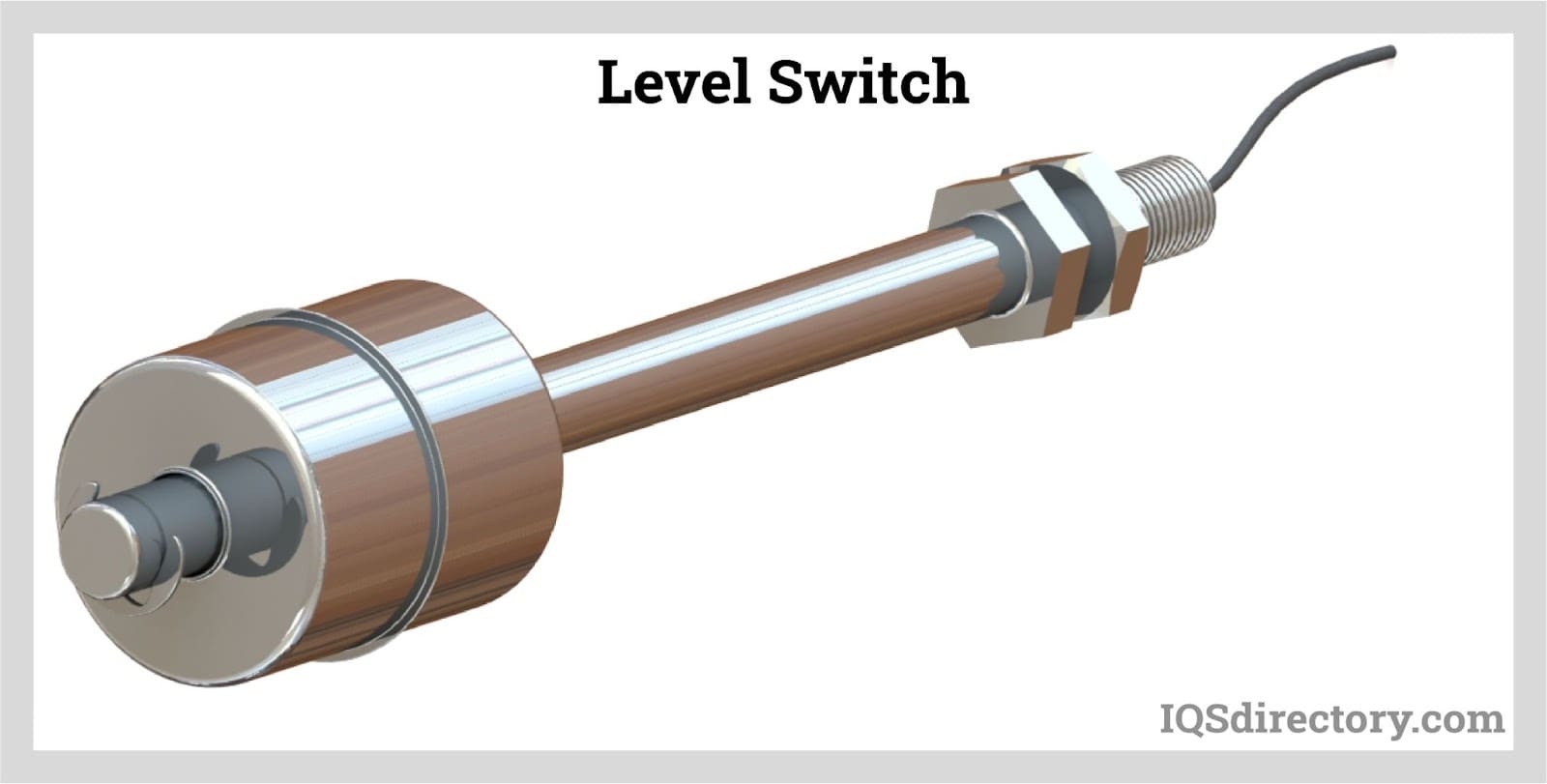

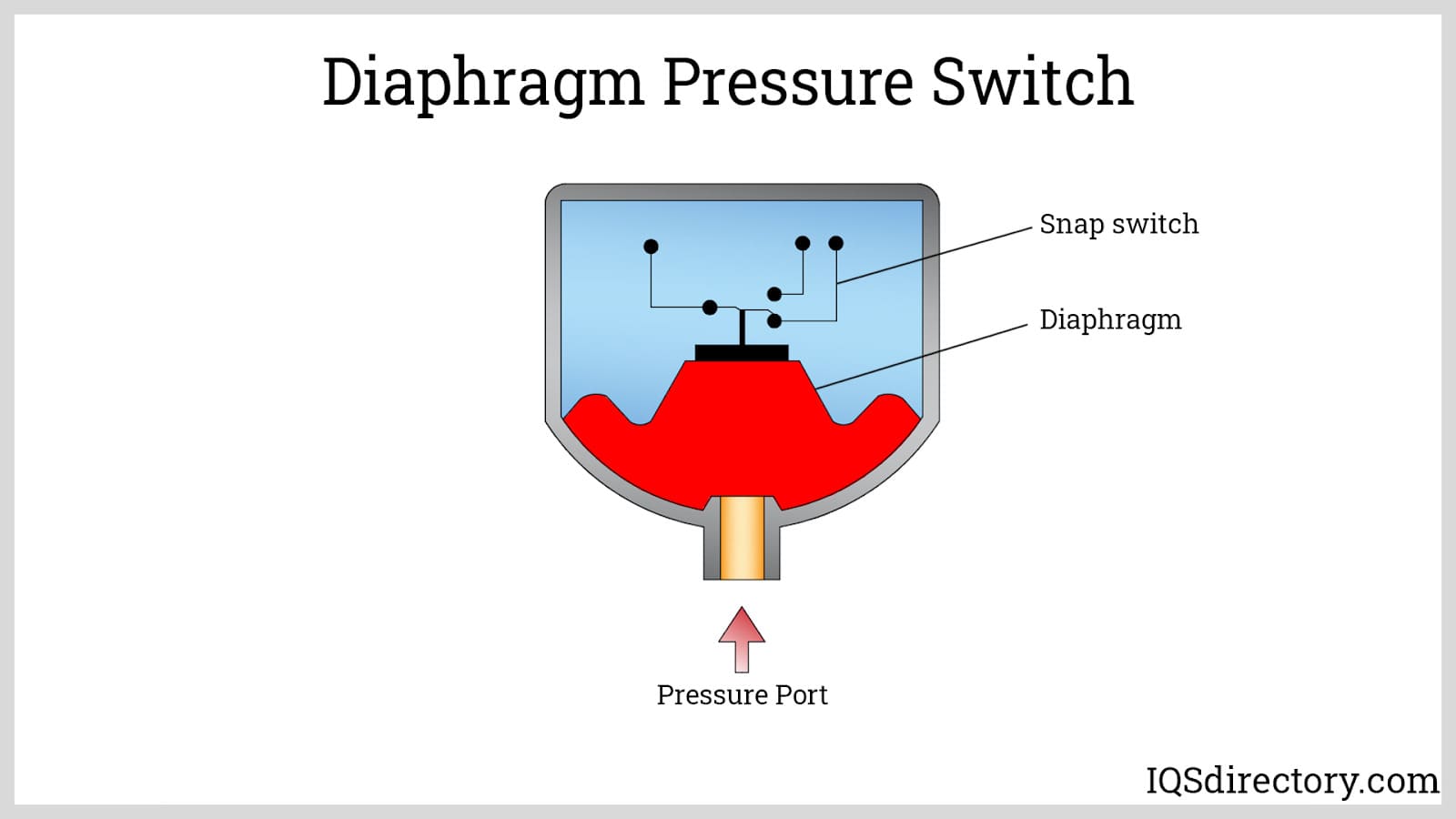
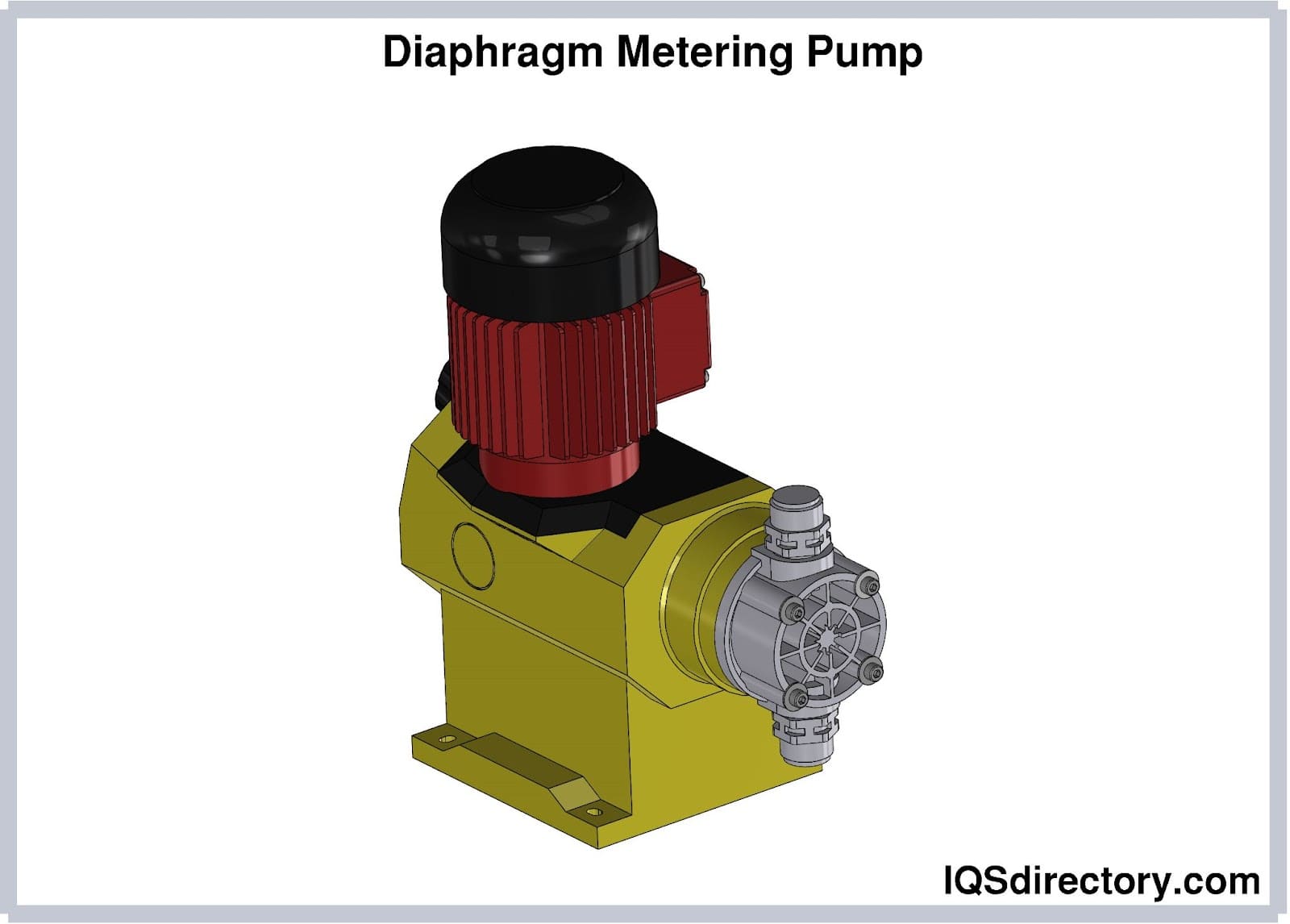
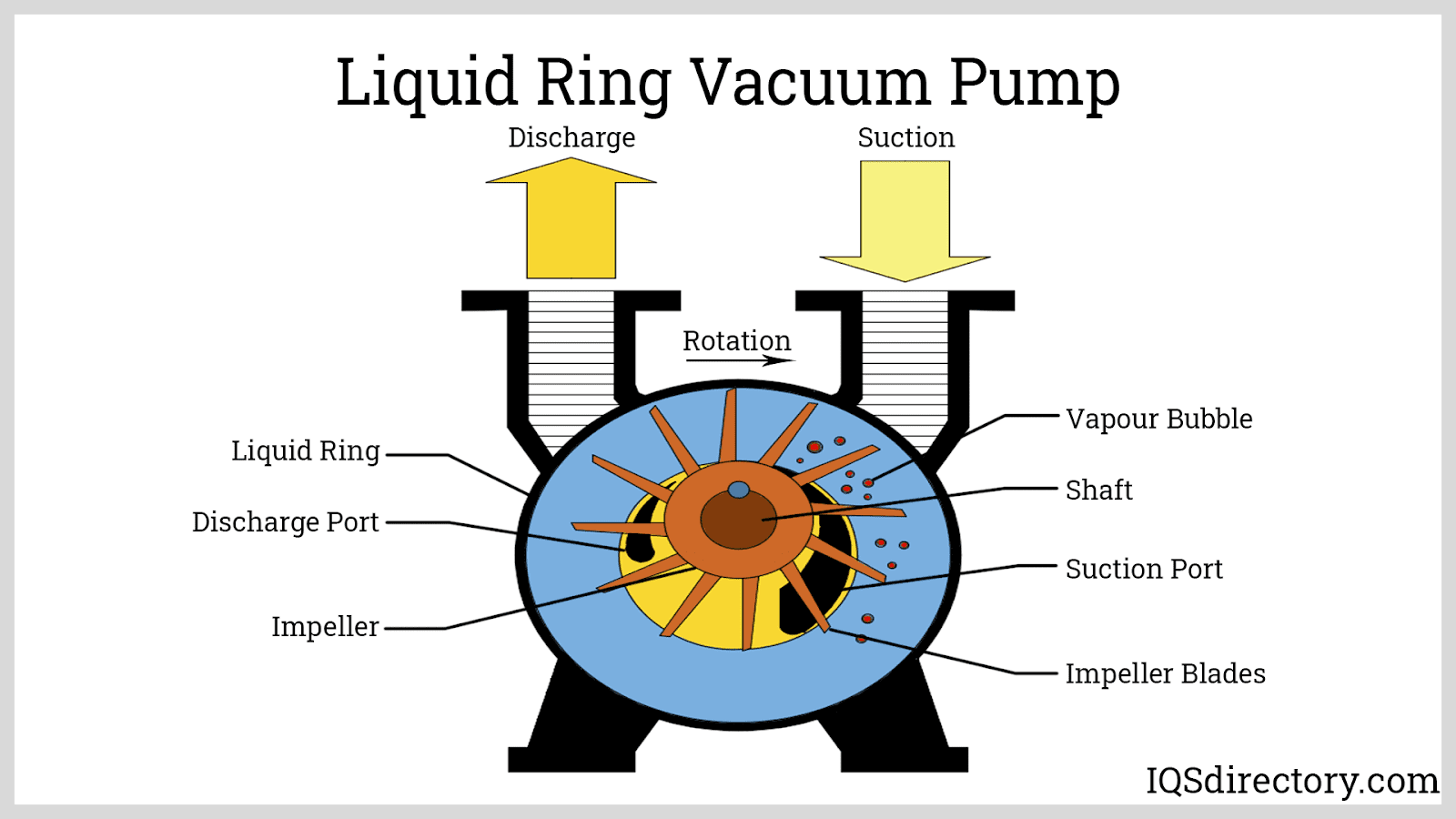
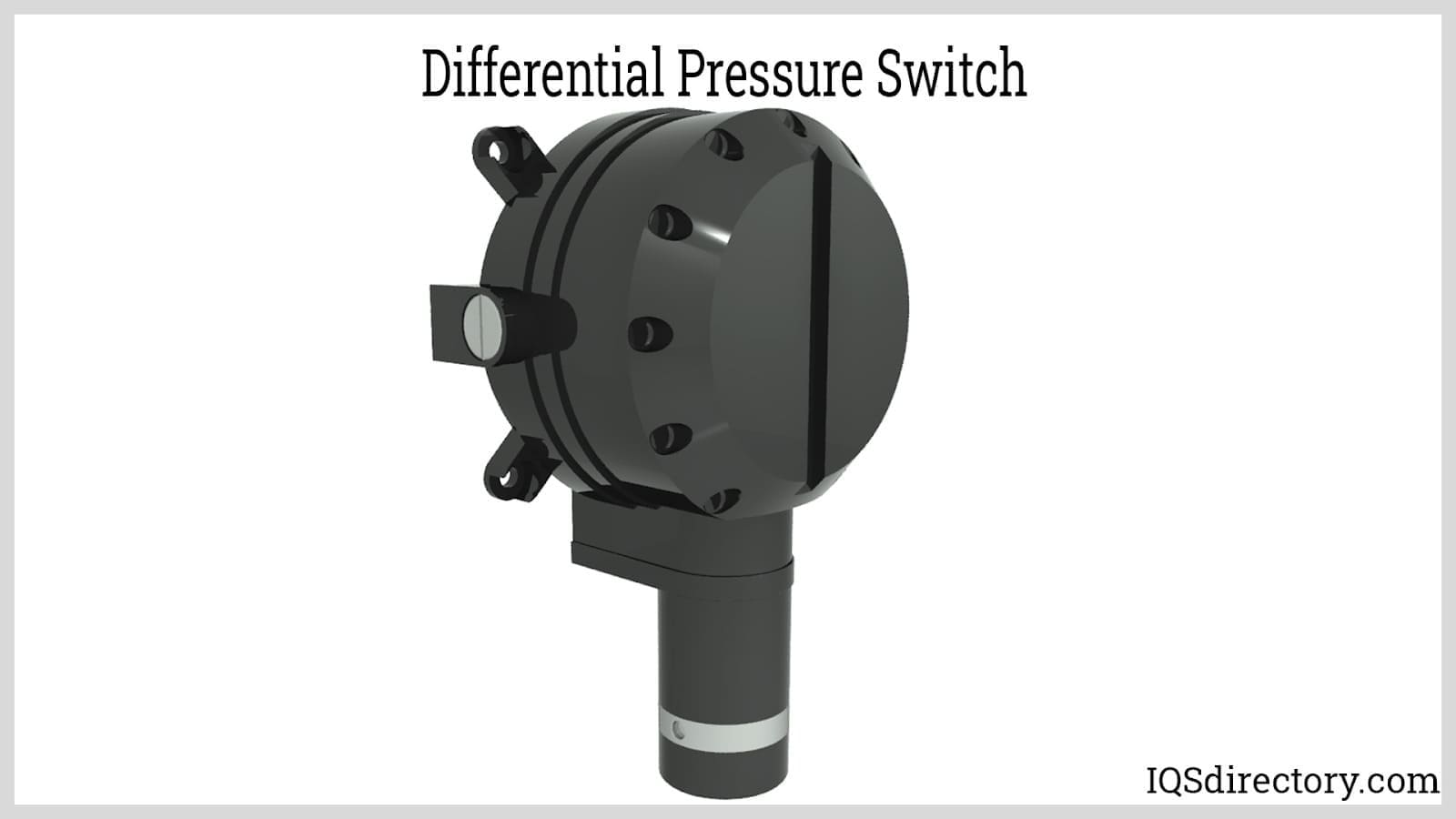
 Flow Meters
Flow Meters Leak Detectors
Leak Detectors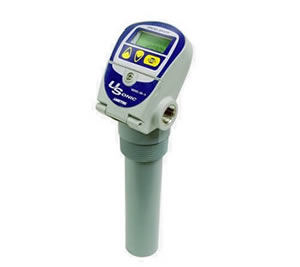 Level Switches
Level Switches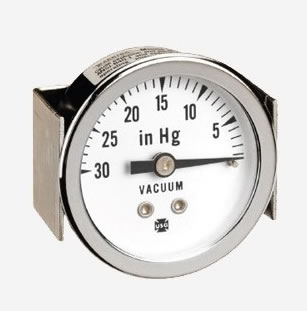 Pressure Gauges
Pressure Gauges Pressure Switches
Pressure Switches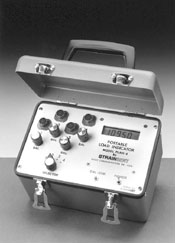 Pressure Transducers
Pressure Transducers Castings & Forgings
Castings & Forgings Bulk Material Handling
Bulk Material Handling Electrical & Electronic Components
Electrical & Electronic Components Flow Instrumentation
Flow Instrumentation Hardware
Hardware Material Handling Equipment
Material Handling Equipment Metal Cutting Services
Metal Cutting Services Metal Forming Services
Metal Forming Services Metal Suppliers
Metal Suppliers Motion Control Products
Motion Control Products Plant & Facility Equipment
Plant & Facility Equipment Plant & Facility Supplies
Plant & Facility Supplies Plastic Molding Processes
Plastic Molding Processes Pumps & Valves
Pumps & Valves Recycling Equipment
Recycling Equipment Rubber Products & Services
Rubber Products & Services